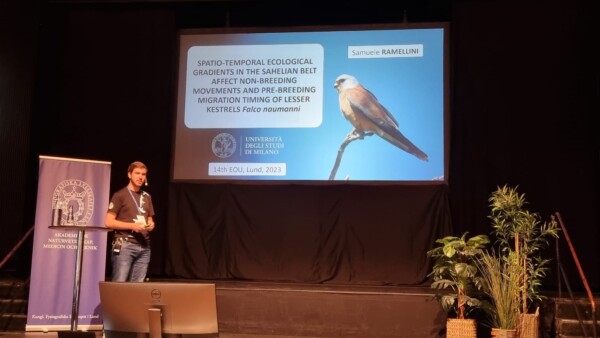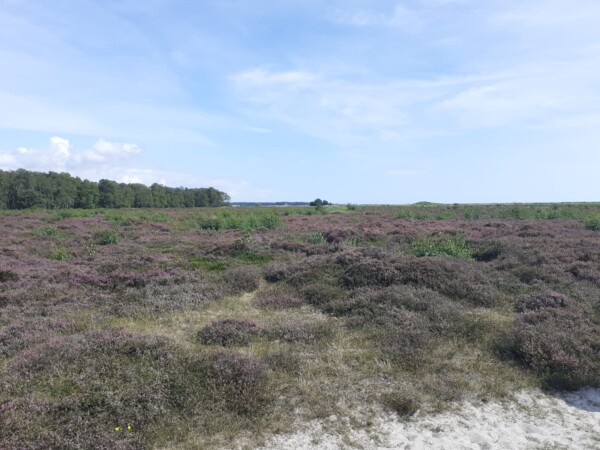In late August 2023, I had the wonderful opportunity to participate at the 14th EOU Conference held in Lund, Sweden, thanks to a BOU travel grant and presented my research titled “Spatio-temporal ecological gradients in the Sahelian belt affect non- breeding movements and pre-breeding migration timing of Lesser Kestrels Falco naumanni“.
The EOU Fledglings meeting in Turin, 2018, was my first international conference and also my first oral presentation in an international conference. After that, I impatiently waited for the next one. This year I finally had the chance to attend my second EOU conference in Lund. Participating in this international conference was totally enriching. First of all, I participated together with several other members of the lab I work with. Being able to share our thoughts on the presentations and think of new perspectives and applications for our own study systems was both insightful and inspiring.
The scientific program was simply thrilling. The sheer variety and quality of talks made it difficult to decide which talk to listen to without missing anyone! It was also a great opportunity to present the work I did for my Master thesis. I shared my latest findings on the effect of spatio-temporal environmental gradients in the Sahel on both non-breeding movements and pre-breeding migration of the Lesser Kestrel (Falco naumanni). The audience’s insightful questions and subsequent discussion with the other researchers working on the Afro-Palearctic migratory system was enriching.
It was great to see the growing recognition of the importance of the non-breeding season in the life cycle of migratory birds. Such a conference really helped me to better frame my hypotheses and ideas into a broader context. First, I attended at the Symposium “Life in the cold: understanding the impact of winter on birds” organized by Alex Sutton and Mark Mainwaring. It was insightful to see that much research is being carried out on a traditionally neglected part of the life cycle. It is pivotal to consider the conditions in this season as these can not only have direct effects on the survival of individuals but also entail carry-over effects over subsequent life cycle stages. Moreover, this is particularly important in light of the recent increase in the frequency extreme events during winter, as these can have profound impacts on individuals. In this context, detailed tracking of both individual movements and body condition can shed light on both phenotypic plasticity and adaptation to such conditions.

Figure 1 Samuele presenting his work on the effect of ecological gradients of Lesser kestrel’s movements © ?????.
As always, a great bunch of attention was given to “fledglings”, a key trait of both the EOU and BOU. It was enlightening to hear from more experienced researchers and to learn from them on how to navigate challenges of the academic life. Such mentorship events and social opportunities will be pivotal in developing my own research pathway.

Figure 2 The field excursion to Falsterbo © Samuele Ramellini.
Overall, I really enjoyed the conference in Lund, and I’m really looking forward to travelling to Bangor in two years! Hope to see you all again in 2025.




